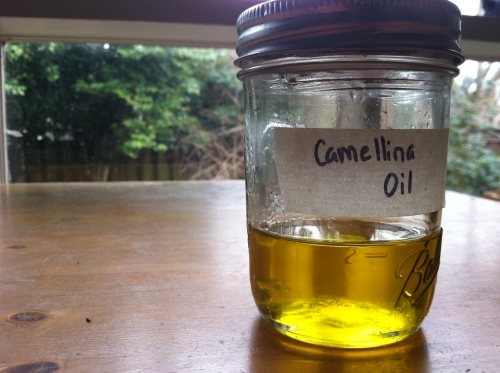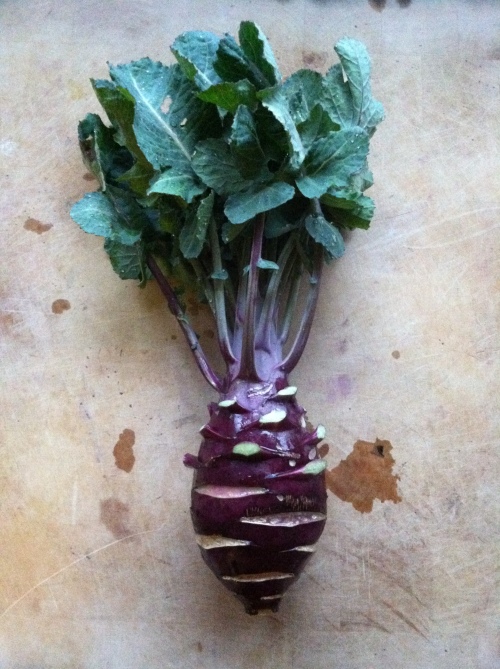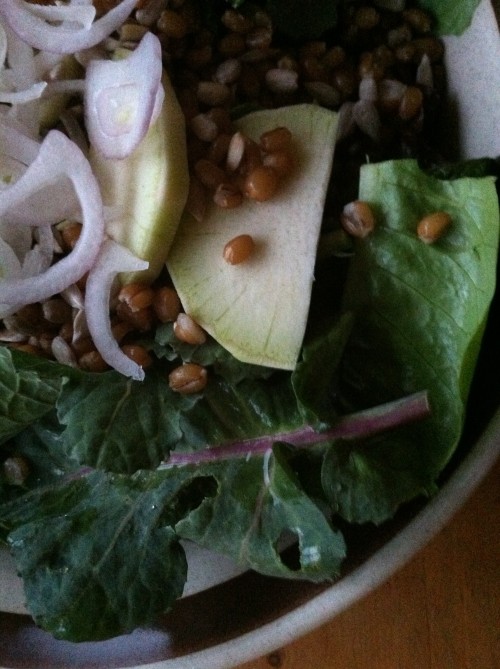Now for the good news–there are real alternatives to growing canola, and some farmers are already getting started! Camelina (Camelina sativa) is an ancient oilseed crop, with archaeological evidence proving its cultivation in Europe 3000 years ago. It was once widely used in oil lamps and cooking, but became less popular in the early twentieth century as the demand for hydrogenated oils (oils that can be treated with hydrogen to keep solid at room temperature, as for margarine or shortening) increased. It is currently marketed largely as a health supplement, but many farmers and consumers are beginning to rediscover its utility as an edible oil and potential biofuel.
Camelina is an exciting alternative to growing canola in the Willamette Valley because it achieves many of the same purposes: its low nutrient needs make it easy to add into a crop rotation, it can be seeded and harvested with traditional grain- or grass-growing equipment, and it will provide raw material for the regional oil-pressers, who are the main voices clamoring for canola production in the Willamette. In addition, its high germination rate makes it competitive against weeds, it is not prone to insect damage, and though a member of the brassica family, camelina is resistant to several common brassica diseases.
But it gets better! Camelina is good for you and easy to cook with! The oil is unusually high in omega-3 and omega-6 fatty acids, vitamin E, and several antioxidants, which means that it’s also very shelf-stable and heat-stable (anything short of deep-frying). Camelina also does not, like other polyunsaturated oils (soy, corn, safflower), create free radicals, those nasty molecules that have been implicated in a whole host of diseases related to cellular damage.*
I was recently presented with a sample of camelina oil, which was exciting and apropos, since I had only just learned about camelina via the canola issue. Its buttery golden color was an immediate sign that this was something different from the vegetable oils you find at the grocery store. When I lifted the lid, I was struck by its strong and unusual smell; but only strong and unusual in a relative way, in that I generally don’t expect my cooking oils to smell like very much at all. It smelled fresh, clean, and–it took me awhile to put my finger on it–bean-y. Bean-y not like the smell of beans cooking on the stove, but like the flavor of a freshly-peeled fava in the springtime.
I debated for quite some time what recipe I would use to test this new oil, and finally decided to let the flavor of the oil lead me. I tasted it plain, and was surprised at how pleasant the experience was. The fresh beaniness was there, all right, but in a milder way, and the mouth-feel was clean and smooth (which makes sense, given its unsaturated fat profile). It was settled; we would eat it raw.
I chose this simple, lightly-flavored dressing to see if the camelina flavor would come through. We threw together an early-spring salad of mixed greens, wheat berries, thinly-sliced kohlrabi, sunflower seeds, and shallots. A said that he detected an unusual nuttiness in the dressing, but I couldn’t. The camelina seemed to meld perfectly with the other ingredients.
As one of the grain farmers at last week’s Small Farms Conference said, “It would be great if people wanted to eat the foods that grow well here.” I, for one, am sold on camelina. If you grow it, I’ll eat it!
Lemon-Sesame Salad Dressing with Camelina Oil
You can, of course, make this dressing with a different oil–just don’t use canola!
1/4 C camelina oil
2 T rice vinegar
juice from 1/4 lemon (a little less than 1 T)
1 t sesame oil
1 t tamari/soy sauce
1/2 t Dijon mustard
Combine all in a mason jar, close lid tightly, and shake vigorously.



